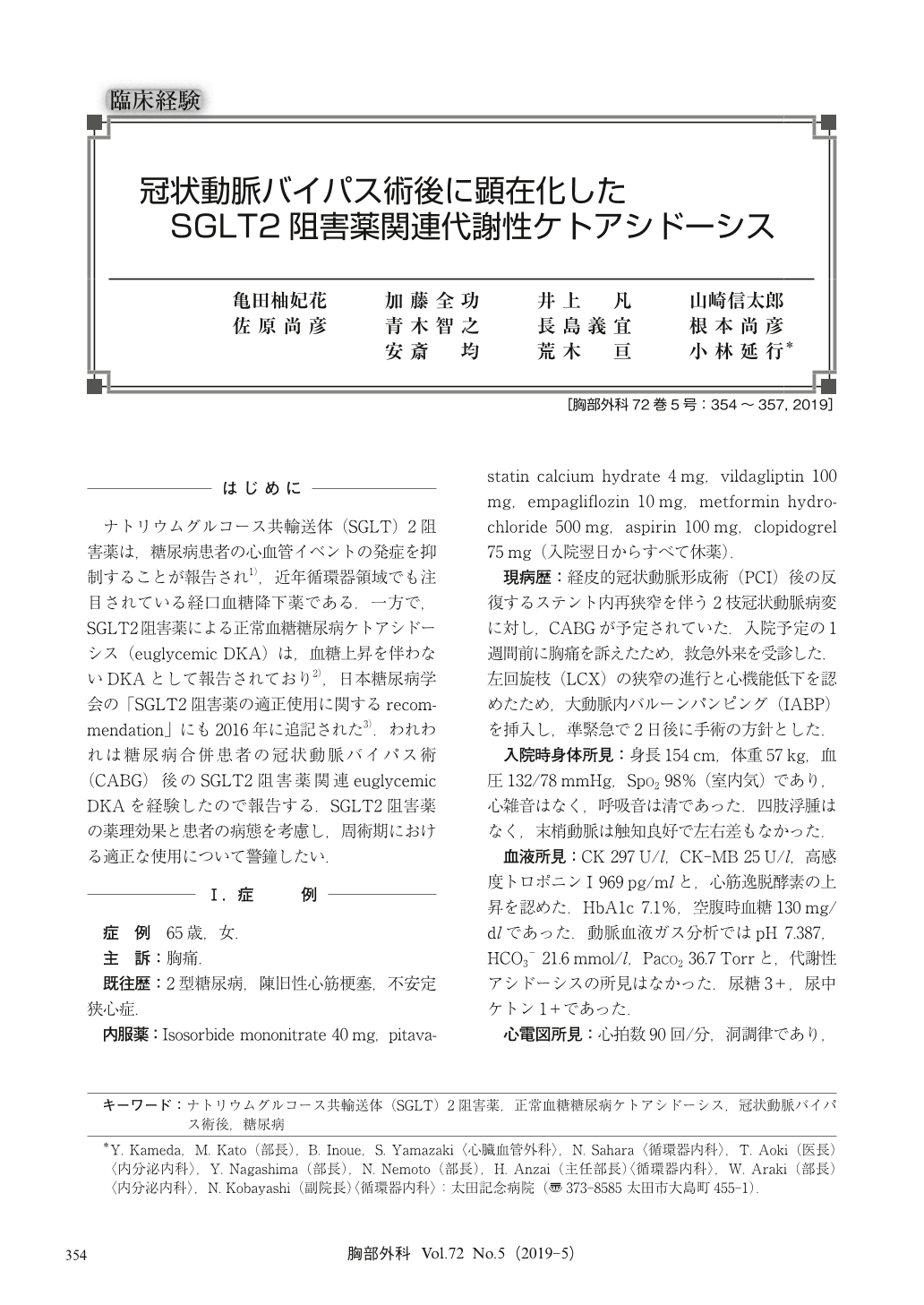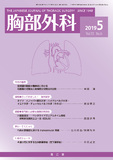Japanese
English
- 有料閲覧
- Abstract 文献概要
- 1ページ目 Look Inside
- 参考文献 Reference
ナトリウムグルコース共輸送体(SGLT)2阻害薬は,糖尿病患者の心血管イベントの発症を抑制することが報告され1),近年循環器領域でも注目されている経口血糖降下薬である.一方で,SGLT2阻害薬による正常血糖糖尿病ケトアシドーシス(euglycemic DKA)は,血糖上昇を伴わないDKAとして報告されており2),日本糖尿病学会の「SGLT2阻害薬の適正使用に関するrecommendation」にも2016年に追記された3).われわれは糖尿病合併患者の冠状動脈バイパス術(CABG)後のSGLT2阻害薬関連euglycemic DKAを経験したので報告する.SGLT2阻害薬の薬理効果と患者の病態を考慮し,周術期における適正な使用について警鐘したい.
A 65-year-old woman with type Ⅱ diabetes and unstable angina presented with chest pain due to in-stent restenosis. Her regular medication comprised an sodium-glucose co-transporter (SGLT) 2 inhibitor. Because of unstable hemodynamic status, semi-emergency coronary artery bypass grafting (CABG) was performed. Postoperatively, the cardiac and hemodynamic status stabilized, but there was progression of metabolic acidosis. Based on the presence of massive urinary ketone bodies without hyper glycosuria, the patient was diagnosed with euglycemic diabetic ketoacidosis (DKA) caused by an SGLT2 inhibitor. Ketoacidosis without elevated blood glucose (i.e., euglycemic DKA) has been reported to be associated with intake of an SGLT2 inhibitor, which promoted glucose excretion in the urine. Our patient developed euglycemic DKA due to the progression of myocardial ischemia and surgical stress. Guidelines in other countries have stipulated that SGLT2 inhibitor should be stopped 24 hours preoperatively. In our case, euglycemic DKA occurred even when the SGLT2 inhibitor was stopped for more than 24 hours preoperatively. Further studies on the withdrawal of an SGLT2 inhibitor in the appropriate perioperative period are required.

© Nankodo Co., Ltd., 2018


